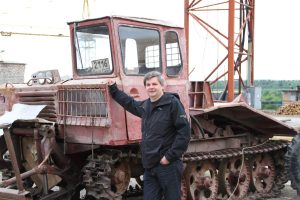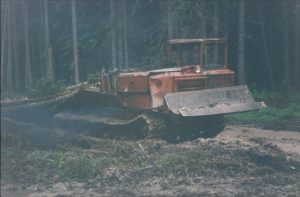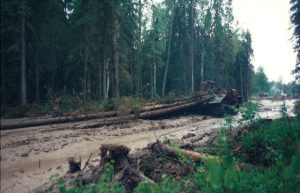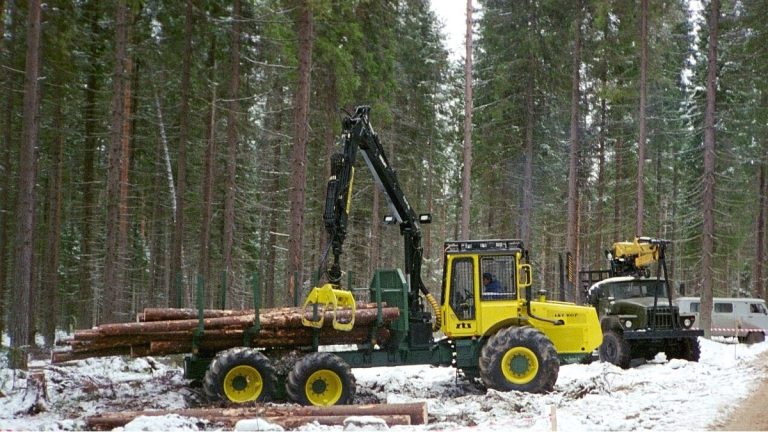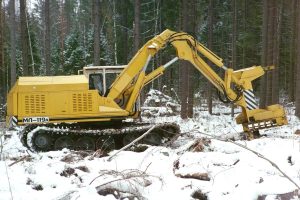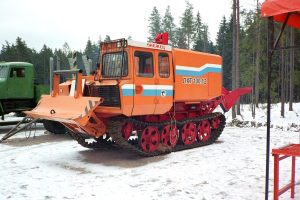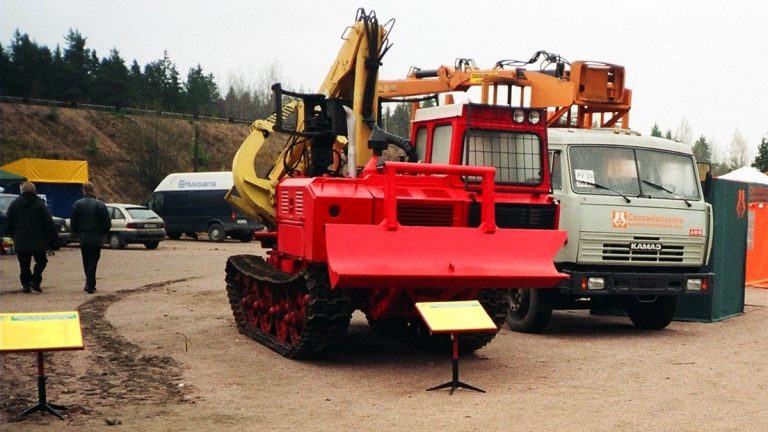I have been in many countries to look at forestry and, of course, the local machines that are used in forestry. Very soon I discovered that not everyone uses the machines that we are used to up here in northern Europe, especially in Sweden and Finland. This made the travelling even more interesting. I will try to present some of the machines I have seen in a series of articles to come. We start in Russia where I have visited both forestry shows and forestry sites in a previous life.
Photo: Alan Sherrard
Strange forest machines
Maybe “strange” is the wrong word to use. The machines I refer to are probably very normal in the places where they are used. It´s for me they seem strange, as I am used to the type of CTL (Cut-To-Length) machinery that we use here in Sweden.
As mentioned above, I used to visit fairs and forestry sites in Russia. My first visit to Russia was to Archangelsk, northwest Russia, in 2000. At the time a town of some 600 000 inhabitants, two pulp mills and six sawmills. Outside of town there were forests that seemed endless, and river Dvina was the transport path from the forest to the mills.
Thinning in northwest Russia
Apart from three of the sawmills, and some cultural events, we visited a forest site where thinning was going on. We were told that the skidders they used were built on tank chassis. When you see them, you are willing to agree with that.
The soil was so muddy that we only visited the landing and a short bit of the main strip road. The strip road itself was interesting as it was wide enough for the skidders to meet anywhere along the way into the thinning.
Even more interesting (sort of) was that the stems were cut to lengths with chainsaws at the landing. One can only guess how many chains that were consumed in a day when cutting those muddy stems. The cutting guys had chains around their necks.
Unfortunately, this was the only time I saw Russian machines in action. I visited many forestry sites later but then the hosts preferred to show modern CTL machines, the type of machines that we see every day here in Sweden. Local machines are more interesting if you ask me.
Many years later, in 2014, I made a short visit to Russia for a conference during which an industry was visited. There, in the yard, I found a skidder like the ones I had seen in Archangelsk in 2000. A friend of mine took the picture of me and the machine, the picture you see at the top of this article. I didn´t ask if it was for sale …
Forestry fairs in Russia
As I worked in the trade fair business most of the times I visited Russia, I logically visited many fairs. Also here you could find interesting machines even though they were stationary. The Interles fair in St. Petersburg was special in those days because the forestry part took place out in the forest – in October. I was an exhibitor there once when it was snowing which wasn´t very pleasant. The good thing was, of course, the machines that were displayed.
Here below are a few examples:
At the Interles a year when there was no snow in October.
The last (?) time I visited the Interles fair it had moved to June which was much more pleasant.
Keep a lookout
It´s strange how you can forget, or just not think about, what you have experienced earlier in life. I guess it´s a good thing that you keep looking forward. If you ask me, the future is much more exciting than the past because you know very little about it. When I started to plan this article, I discovered how much I have seen, and photographed so …
Keep watching here at NordicWoodJournal.com. Every now and then I will write about machines that I bumped into, both historical and futuristic ones.
Photos: Per Jonsson, where not otherwise stated.






